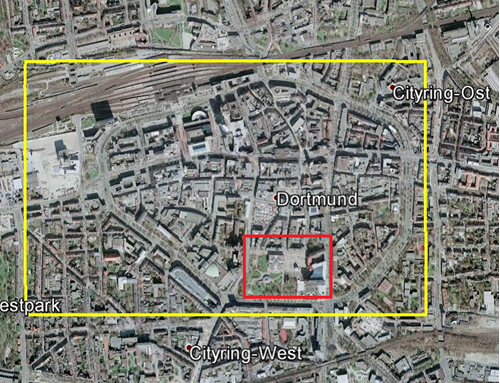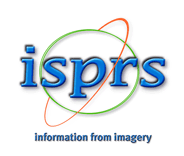Aim of the benchmark
The aim of the project is to assess the accuracy and reliability of current methods for calibration and orientation of images acquired by different platforms as well as their integration for image matching and dense point cloud generation. In current research especially the question on how large changes of perspective and scale differences need to be tackled in image orientation and (dense) image matching is not approached systematically.By providing a new benchmark dataset consisting of state-of-the-art sensor data and covering different relevant tasks and scenarios the current status of research is identified and further works will be stimulated.
The DENSE IMAGE MATCHING (DIM) benchmark is performed in cooperation with the EuroSDR’s Scientific Initiative “Benchmark on High Density Image Matching for DSM Computation”, joining both the two available datasets on Dortmund (Germany) and Zurich (Switzerland). The efforts of both the initiatives are contributing to set up a more complete and challenging dataset, considering flights with different features in terms of GSD size and overlap.
Two different typologies of data are available for participants:
1) Nadir and oblique aerial images both on Zurich and Dortmund (Zeche Zollern)
2) Combined block (UAV and terrestrial images) on Dortmund (Zeche Zollern)
Participants' results will be evaluated according to the methodology described by Cavegn et al. (2014). The necessary images have been already oriented for the data delivery, and no GCPs or CPs will be provided.
For more information about the delivered data on Dortmund (Zeche Zollern) and Zurich, please refer to the dedicated webpages.
The IMAGE ORIENTATION (IO) benchmark aims to assess the state-of-the-art in multi-platform and multi-view image orientation and calibration. One current problem is to retrieve reliable and efficient matches when large different perspectives and scales are available, such as in modern multi-camera oblique systems, or when UAV-based images are to be combined with images taken from the ground.
For this benchmark again two image sets are available:
1) Nadir and oblique aerial images Dortmund (Centre)
2) Combined block (UAV and terrestrial images) on Dortmund (Centre)
We will provide some selected ground control points and evaluate the bundle block adjustment result through residuals at check points and tie point quality at planar faces. Details are described in Nex et al. (2015).
For further information about the acquired data in Dortmund, see the description below.
Terms of use
The data users should include the following acknowledgement in any publication resulting from the dataset: "The authors would like to acknowledge the provision of the datasets by ISPRS and EuroSDR, released in conjuction with the ISPRS scientific initiative 2014 and 2015, lead by ISPRS ICWG I/Vb."
The benchmark team would appreciate if participants could cite the following paper reporting the aims of the benchmark and the data detailed description:
Acknowledgements
Data acquisition and pre-processing was made feasible through the funds provided by ISPRS (Scientific Initiative) and EuroSDR. Further we are grateful to Aerowest GmbH for sponsoring part of the PentaCam flight. We thank Pix4D for providing us a research license of Pix4Dmapper.
General description of the acquired data in Dortmund:
Two different test areas have been acquired over the city of Dortmund. These areas have been chosen according to different criteria, such as: (i) different typologies of buildings; (ii) security for people and instruments and easy accessibility to the whole area; (iii) technical support and availability of local surveying companies; (iv) easiness in getting flight permissions (for UAV flights).
1) City center – Dortmund: it is a dense urban area with tall modern buildings as well as historical façades (churches and public buildings) as shown in Figure 1. The yellow area defines the area acquired by the airborne oblique image system (IGI PentaCam) while the red area shows the areas acquired by UAV platforms and terrestrial images as well as by TLS. This second area contains besides others the Dortmund town hall and public offices.


 |
 |
| (a) | (b) |
 |
 |
| (c) | (d) |
ICWG II/Ia






